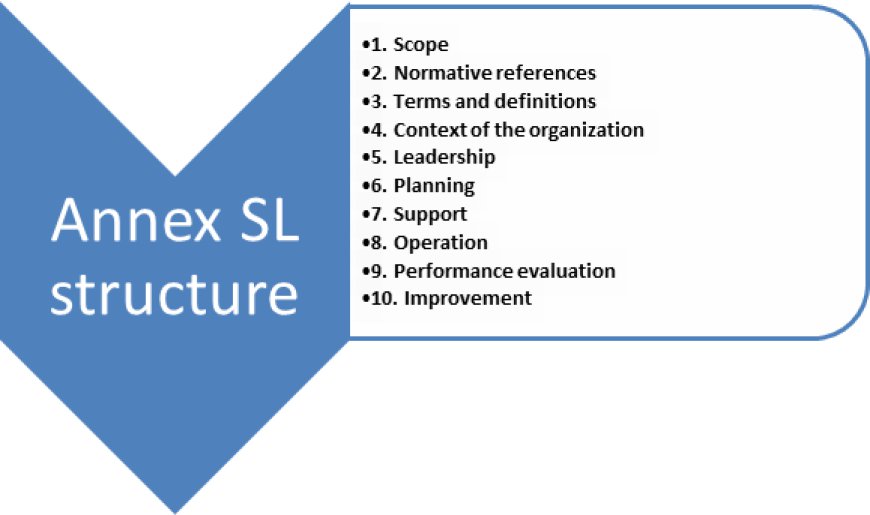The Structure of ISO 14001:2015 (Annex SL)
ISO 14001:2015 helps organizations minimize waste, reduce energy consumption, and lower their carbon footprint, all while improving operational efficiency and enhancing their reputation with customers and stakeholders. It applies to organizations of all sizes and sectors.
ISO 14001:2015 is built on the Annex SL framework, which provides a unified structure for ISO management system standards. This structure allows organizations to integrate multiple management systems seamlessly. ISO 14001 auditor training online focuses on helping professionals understand the requirements and structure of Annex SL, ensuring consistency and efficiency in implementing Environmental Management Systems (EMS).
The ISO 14001 auditor training online emphasizes the importance of aligning the EMS with the high-level structure defined in Annex SL. This framework includes key elements such as context of the organization, leadership, planning, support, operation, performance evaluation, and continual improvement. By enrolling in ISO 14001 auditor training online, individuals can gain the necessary knowledge and skills to audit environmental management practices effectively.
Understanding Annex SL
1. What Is Annex SL?
Annex SL is a high-level framework that standardizes the structure of ISO management system standards. It provides a common language and format, making it easier for organizations to implement and integrate multiple standards, including ISO 14001:2015.
2. Key Features of Annex SL
-
Uniform Structure: Annex SL ensures consistency across all ISO standards, streamlining implementation.
-
Integrated Approach: It facilitates the integration of different management systems, such as quality, environmental, and occupational health and safety.
-
Enhanced Clarity: The structure simplifies the understanding and application of requirements.
Key Elements of ISO 14001:2015 Based on Annex SL
1. Context of the Organization
ISO 14001:2015 begins with understanding the internal and external factors that influence the organization’s EMS. This includes identifying interested parties and their expectations.
2. Leadership and Commitment
Leadership plays a critical role in driving environmental initiatives. ISO 14001 auditor training online highlights the importance of top management’s active involvement in setting the organization’s environmental policies.
3. Planning
Planning involves identifying risks and opportunities, determining significant environmental aspects, and setting objectives. Annex SL emphasizes proactive planning to achieve desired outcomes.
3.1 Environmental Aspects and Impacts
Organizations must assess the environmental impacts of their activities and prioritize actions to mitigate adverse effects.
3.2 Risk Management
Risk-based thinking is a core element of Annex SL, guiding organizations to address potential challenges systematically.
4. Support
Support focuses on allocating resources, building competencies, and ensuring effective communication. ISO 14001 auditor training online provides insights into managing documented information and maintaining transparency.
5. Operations
Operational planning and control are vital for implementing the EMS. This includes managing processes, suppliers, and emergency preparedness.
5.1 Control of Processes
Organizations must establish procedures to control activities that can impact the environment significantly.
5.2 Emergency Preparedness
ISO 14001:2015 requires organizations to prepare for and respond to environmental emergencies effectively.
6. Performance Evaluation
Performance evaluation involves monitoring and measuring environmental performance, conducting internal audits, and reviewing management practices.
6.1 Internal Audits
Regular audits ensure that the EMS complies with ISO 14001:2015 requirements and achieves its objectives.
6.2 Management Review
Top management must review EMS performance periodically to identify areas for improvement.
7. Continual Improvement
Continual improvement is a key principle of ISO 14001:2015. Organizations must identify opportunities for enhancement and implement changes to improve environmental performance.
The Role of ISO 45001 in Preventing Workplace Explosions
1. Overview of ISO 45001
ISO 45001 is the international standard for Occupational Health and Safety Management Systems. It provides a framework for managing workplace safety and preventing incidents, including explosions.
2. How ISO 45001 Addresses Workplace Explosions
2.1 Hazard Identification
ISO 45001 requires organizations to identify potential hazards, including explosive materials and conditions.
2.2 Risk Assessment
The standard emphasizes assessing risks associated with workplace explosions and implementing control measures.
2.3 Emergency Response Planning
Organizations must develop and test emergency response plans to handle potential explosions effectively.
3. Integration of ISO 45001 and ISO 14001:2015
Integrating ISO 45001 with ISO 14001:2015 allows organizations to manage environmental and safety risks holistically. ISO 14001 certification in Pakistan highlights the growing adoption of integrated management systems to enhance operational efficiency and compliance.
4. Benefits of ISO 45001 in Workplace Safety
-
Proactive Risk Management: ISO 45001 helps organizations identify and mitigate hazards before they lead to incidents.
-
Compliance with Regulations: Adopting ISO 45001 ensures compliance with occupational health and safety laws.
-
Improved Employee Confidence: A safe workplace fosters employee trust and productivity.
Conclusion
ISO 14001 auditor training online and ISO 45001 implementation are essential for achieving environmental sustainability and workplace safety. ISO 14001 auditor training online equips professionals with the knowledge to audit EMS effectively, while ISO 45001 focuses on preventing workplace incidents like explosions. By obtaining ISO 14001 certification in Pakistan and integrating it with ISO 45001, organizations can enhance compliance, efficiency, and safety. Together, these standards contribute to a sustainable and secure future.


 MUNTAHAKHAN
MUNTAHAKHAN